Find out how to cook the most delicious Smithfield pork tenderloin in the oven. This easy recipe guarantees tender and juicy meat with a crispy, golden-brown exterior. Add a bright white wine sauce for a touch of elegance. It’s a restaurant-quality meal that you can easily make at home for any occasion!

Let’s prepare together the best pork tenderloin ever… in the oven! It’s easy and comes out tender and yummy! This dish is a winner that you’ll want to make again and again!
Why You’ll Love This Pork Tenderloin Recipe
- Succulent: This garlic pork tenderloin is roasted to perfection in the oven, resulting in a tender, moist, and juicy texture.
- Versatile: Oven-baked pork tenderloin easily adapts to your taste and the seasoning ingredients you have on hand.
- Elegant: The beautiful presentation makes this pork tenderloin ideal for special occasions, but it’s also great for casual weeknight meals!
- Healthy: This dish is low-carb, high-protein, gluten-free, and dairy-free.
Pork Tenderloin in the Oven
Smithfield pork tenderloin has gained popularity thanks to its mouthwatering taste and superior quality. The lean and tender texture of this cut makes it perfect for roasting in the oven. It’s also a budget-friendly protein option that doesn’t sacrifice quality.
The garlic-herb paste enhances the natural flavors of the pork, while the white wine sauce adds a touch of brightness. The result is a crispy and golden-brown exterior with a tender and juicy interior.
By learning how to cook pork tenderloin in the oven, you’ll allow the flavors to fully develop, ensuring even cooking throughout. Serve this delicious dish with steamed asparagus and potatoes for a complete and impressive meal!
Ingredients and Substitutions
For the pork loin:
- ¼ cup vegetable oil – Substitute with avocado oil or canola oil.
- 6 garlic cloves – Replace with minced garlic from a jar in a pinch.
- 1 teaspoon Knorr chicken bouillon powder – Alternatively, use a cube of chicken bouillon.
- 1 teaspoon salt
- ½ teaspoon ground black pepper
- ¾ teaspoon smoked paprika – You can also use hot, sweet, or regular paprika.
- 2 tsp fresh rosemary or 1 teaspoon dried – Try other herbs like thyme or sage.
- 2 ½ pounds boneless pork tenderloin (Smithfield All Natural Fresh Pork Tenderloin – 2 count) – Remove any silver skin.
- Fresh rosemary sprigs to decorate – Or use whichever fresh herb you prefer.
- Fresh lemon to decorate – Experiment with other citrus fruits.
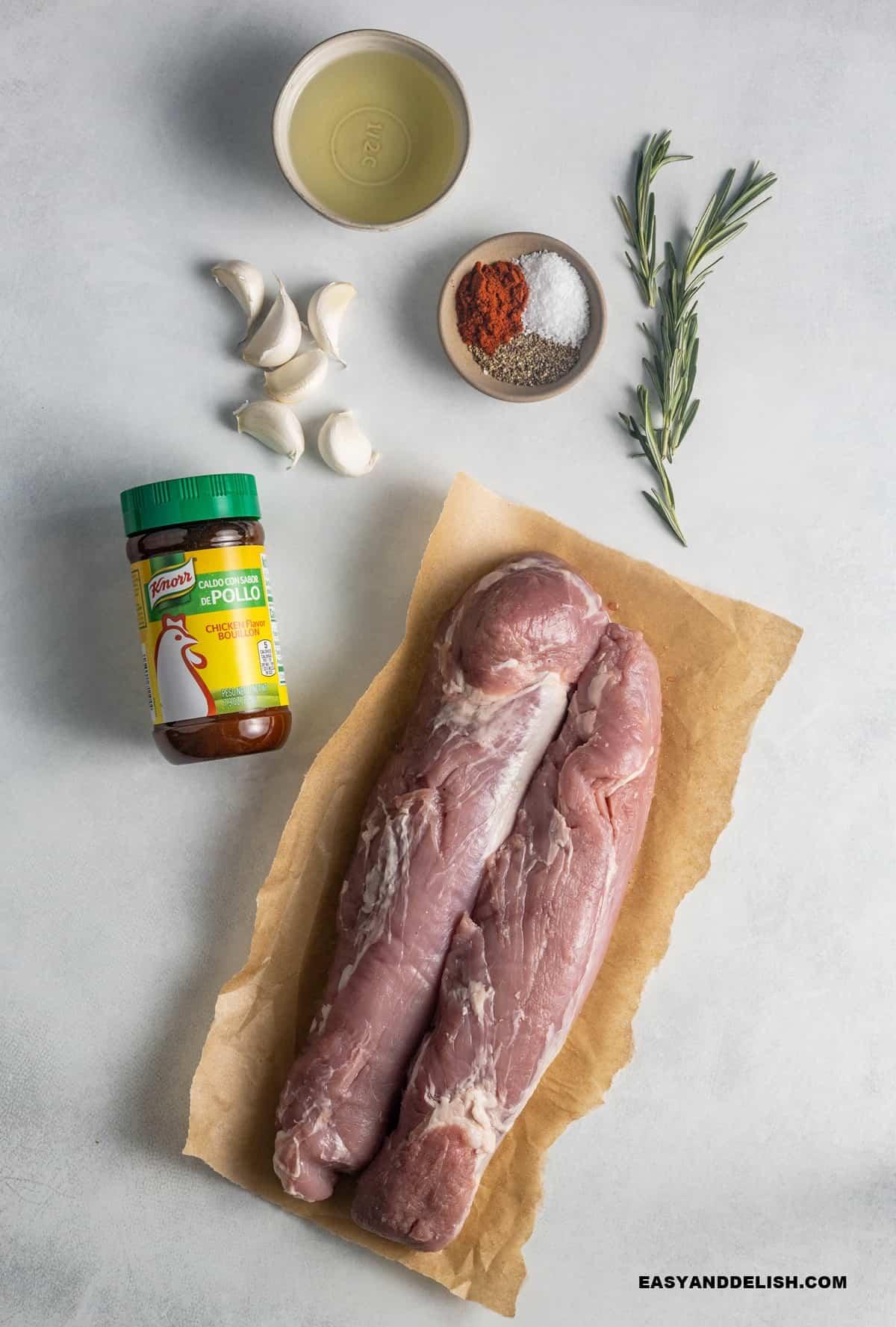
For the white wine sauce:
- ½ cup dry white wine – Choose options like pinot grigio, sauvignon blanc, or pinot blanc. You can also use unoaked chardonnay.
- ½ cup chicken broth – Homemade or store-bought chicken broth both work. You can also use vegetable broth.
- ¼ tsp salt
- ¼ tsp white ground pepper
- ½ tablespoon cornstarch, whisked with 1-2 tablespoons water until smooth – Alternatively, use potato starch. If you’re on a keto diet, use ½ tablespoon xanthan gum instead.
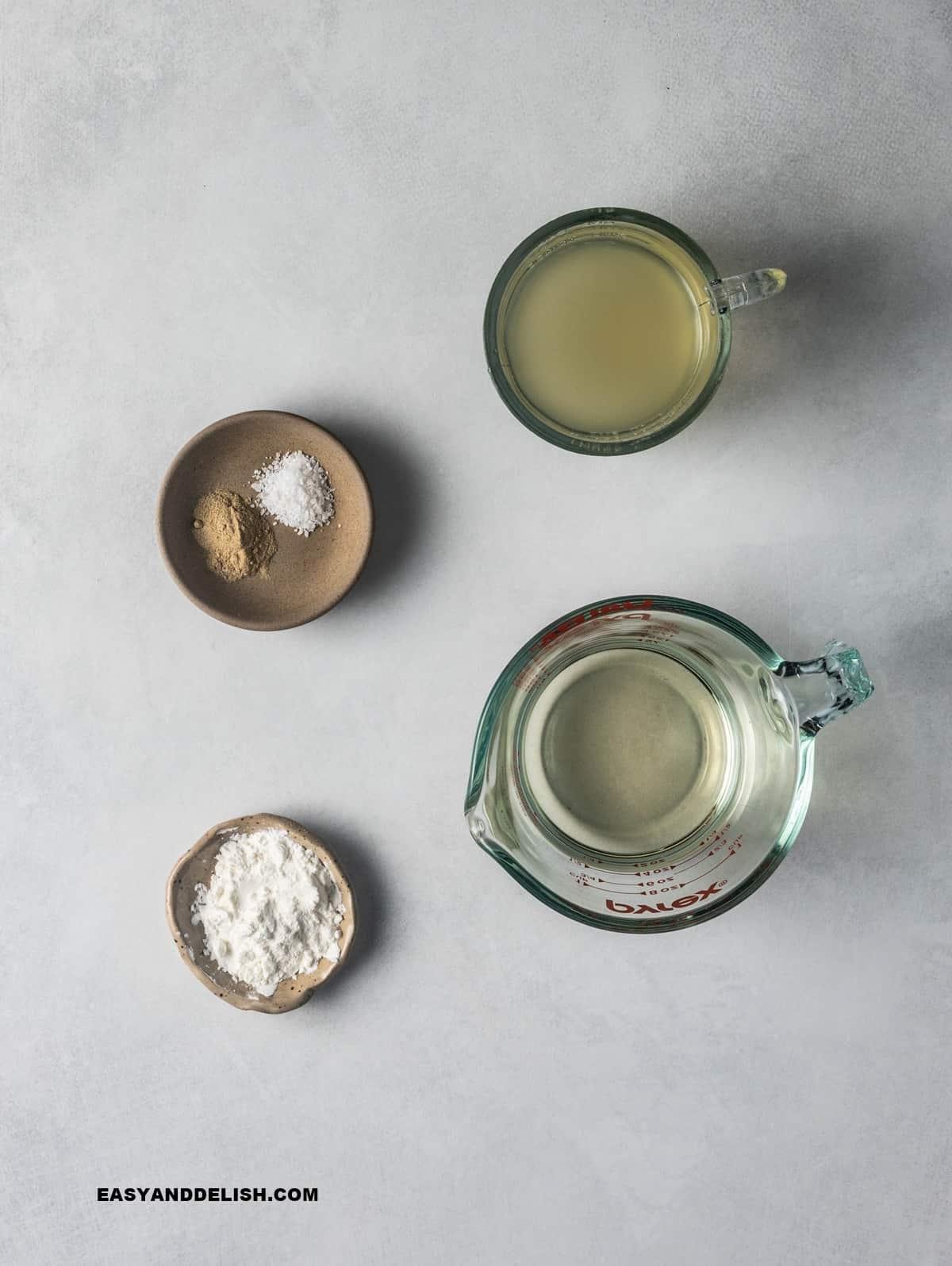
How to Cook Smithfield Pork Tenderloin in the Oven
Prepare the Smithfield pork tenderloin:
- Remove the pork from the refrigerator about 15 minutes before roasting to bring it to room temperature.
- Position a rack in the middle of the oven and preheat it to 400°F (about 200°C).
- Trim away and discard the silver skin from the tenderloins. Use a paring knife to score crisscross lines about ⅛-inch deep and ¼-inch apart on the “flat” side of each tenderloin. This step helps the tenderloins bond together and prevents them from falling apart when sliced. Make sure to pat dry each tenderloin with a paper towel!
- Place the flat sides of the tenderloins together head-to-tail (thick end to thin end) to ensure even cooking. Tie with butcher’s string, spacing the ties 1 ½ inches apart.
- In a blender or food processor, blend or process together the oil, garlic, bouillon, salt, pepper, paprika, and rosemary.
- Place the pork tenderloin, fat side up, on a rack set over a roasting pan. Spread the garlic paste all over the tenderloin.
- Roast in the oven until a meat thermometer inserted into the thickest part of the tenderloin registers 145°F, about 20-30 minutes, depending on the thickness.
- Remove from the oven, transfer the pork to a platter, and cut the strings. Keep it warm, tented with foil, while making the wine sauce.
- Slice the roasted pork tenderloin after resting for 5-10 minutes or just before serving.
For the wine sauce:
- Pour the white wine into the roasting pan (rack removed) in which the tenderloin was cooked. Place the pan over medium heat and scrape up the browned bits from the bottom.
- Add the stock, salt, and pepper. Bring to a simmer and cook, stirring, until the liquid has reduced to half. Skim fat from the surface of the liquid.
- Strain the sauce and place it into a clean saucepan. Whisk in the cornstarch mixture and cook over medium heat until the sauce has thickened.
Serve the hot wine sauce in a side bowl with the sliced Smithfield pork tenderloin. Garnish the loin with chopped rosemary on top, as well as some rosemary sprigs and sliced lemon on the side. Steamed asparagus makes a great light side for this roasted tenderloin!
Useful Tips for Making Roasted Pork Tenderloin
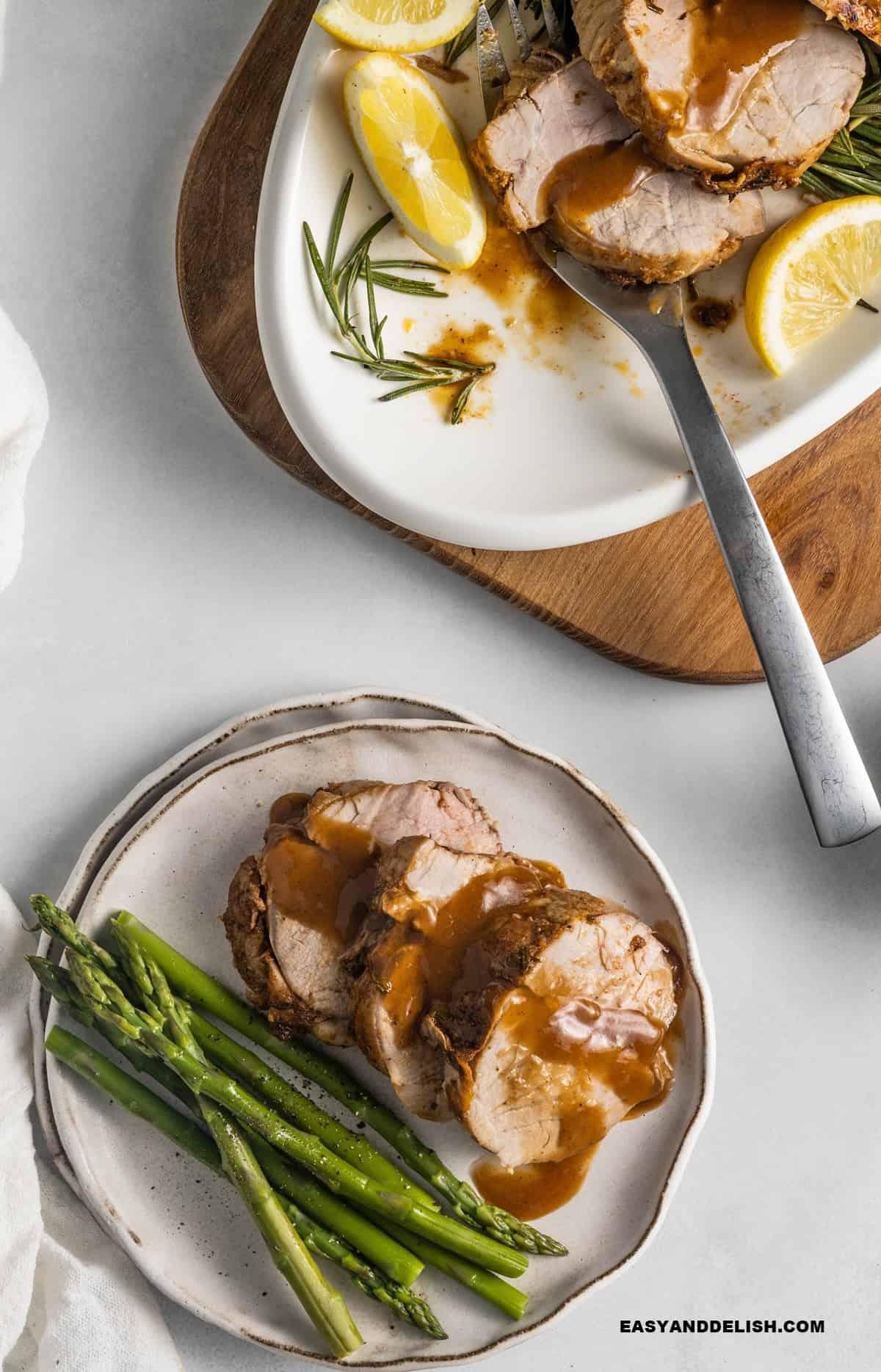
- Room temperature: Bring the pork tenderloin to room temperature before roasting for a more even cook.
- Trim first: Remove the silver skin for the most tender result.
- Score the pork: Remember to score the tenderloins to help them bind together and prevent them from falling apart when sliced.
- Use a tie: Tie the tenderloins together with butcher’s string to ensure even cooking.
- Thermometer: Use a meat thermometer to check for the correct internal temperature. Pork tenderloin should reach 145°F.
- Rest: Allow the pork tenderloin to rest for at least 5-10 minutes before slicing to let the juices redistribute.
- Deglaze: Deglazing the roasting pan with white wine creates a more flavorful base for the sauce.
- Strain: Strain the sauce and thicken it with a cornstarch slurry for a smooth texture.
- Garnish: For an aromatic and elegant presentation, garnish the roasted pork tenderloin with fresh rosemary sprigs and slices of lemon.
What to Serve with Baked Pork Tenderloin
Once your Smithfield pork tenderloin has rested, serve it with some delicious side dishes such as:
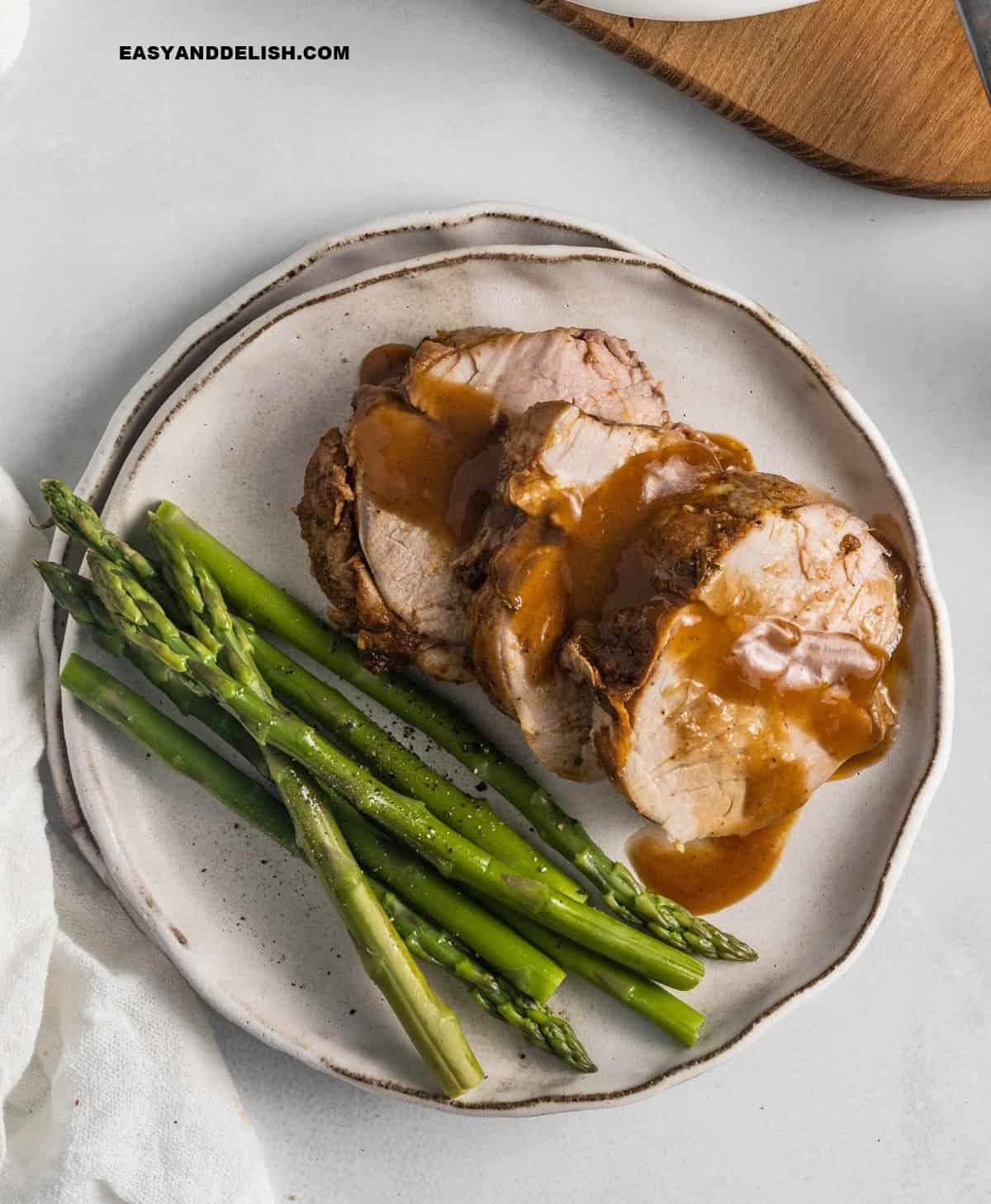
- Air fryer asparagus
- Garlic mashed potatoes
- Air fryer potato wedges
- Green beans almondine
- Air fryer Brussels sprouts
- Butternut squash salad
- Healthy potato salad
- Roasted carrots and parsnips
FAQs
Q: What are the differences between Smithfield pork loin vs. pork tenderloin?
Despite their similar names, pork loin and pork tenderloin are distinct cuts of meat. The pork loin comes from the back of the pig, between the shoulder and the start of the leg. On the other hand, the tenderloin is found under the backbone and runs alongside the ribs. Pork tenderloin is more tender and succulent compared to pork loin, which is denser and firmer. Pork tenderloin is typically more expensive per pound due to its tenderness.
Q: What is the best way to cook Smithfield pork tenderloin?
Roasting Smithfield pork tenderloin in the oven is the best method for several reasons. Firstly, it allows for even cooking and heat distribution. Secondly, it creates a delicious caramelized crust on the outside, enhancing the flavor. Lastly, this cooking technique helps retain moisture, resulting in a moist and tender final product.
Q: What is the proper internal temperature for pork tenderloin?
According to the USDA, the proper internal temperature for roasted pork tenderloin is 145°F for medium doneness. To measure the temperature accurately, insert a meat thermometer into the thickest part of the tenderloin, ensuring you’re inserting it lengthwise. Start checking the temperature around 5-10 minutes before the cooking time specified in this recipe. Once the tenderloin reaches 145°F, remove it from the oven and let it rest for 5-10 minutes, tented with foil.
Q: Is it better to cook pork tenderloin at 350°F or 400°F?
Cooking pork tenderloin at 400°F allows for a nice crust to develop on the outside while maintaining a tender interior, resulting in more flavor. However, you can cook it at 350°F if you prefer a more even cook, although the crust may not be as pronounced. Ultimately, it depends on personal preference, but pork tenderloin is typically cooked at 400°F.
Q: Should roasted pork tenderloin be cooked fast or slow?
Roasted pork tenderloin is best cooked at a higher temperature for a shorter period. This allows the outside to brown while keeping the inside tender and juicy. That’s why the most common temperature for cooking pork tenderloin is 400°F.
Q: Is it better to sear pork tenderloin before baking?
While searing the pork tenderloin before baking can create a tasty crust, it is not necessary for this recipe.
Storage
If you have leftover garlic pork tenderloin, follow these storage and reheating tips:
- Fridge: Once fully cooled, store the leftover pork tenderloin in an airtight container for up to 3-4 days in the fridge.
- Freezer: You can freeze cooked and cooled pork tenderloin in a freezer-safe container for up to 3 months.
- Reheating: To reheat, place the tenderloin in the oven at 325°F until warmed through. Be careful not to overcook it, as it can dry out the meat.
Variations
Feel free to try these variations to customize your pork tenderloin:
- Tangy: Add Dijon mustard to the garlic-herb paste for a tangy twist.
- Herbs: Substitute fresh thyme or sage for the rosemary.
- Glaze: Drizzle a balsamic glaze on the finished dish for added sweetness and depth.
- Spice rub: Use a dry rub with spices like chili powder, cumin, and paprika.
- Bacon wrapped: Wrap the pork tenderloin in bacon before roasting for added flavor and moisture.
Other Pork Recipes to Enjoy
If you love pork, here are some other delicious pork recipes you’ll enjoy:
- Pan-grilled pork chops
- Stuffed pork loin roast
- Crock pot pork loin
- Barbecue pork chops
- Broiled pork chops
- Barbecue pork ribs
- Baked pork ribs
- Chinese barbecue ribs
- Pork fajitas
- Grilled baby back ribs
- Stovetop baby back ribs
- Instant Pot pulled pork
- Slow cooker pork stroganoff
- Pan-seared pork chops
- Pressure cooker sweet and sour pork
PIN & ENJOY!
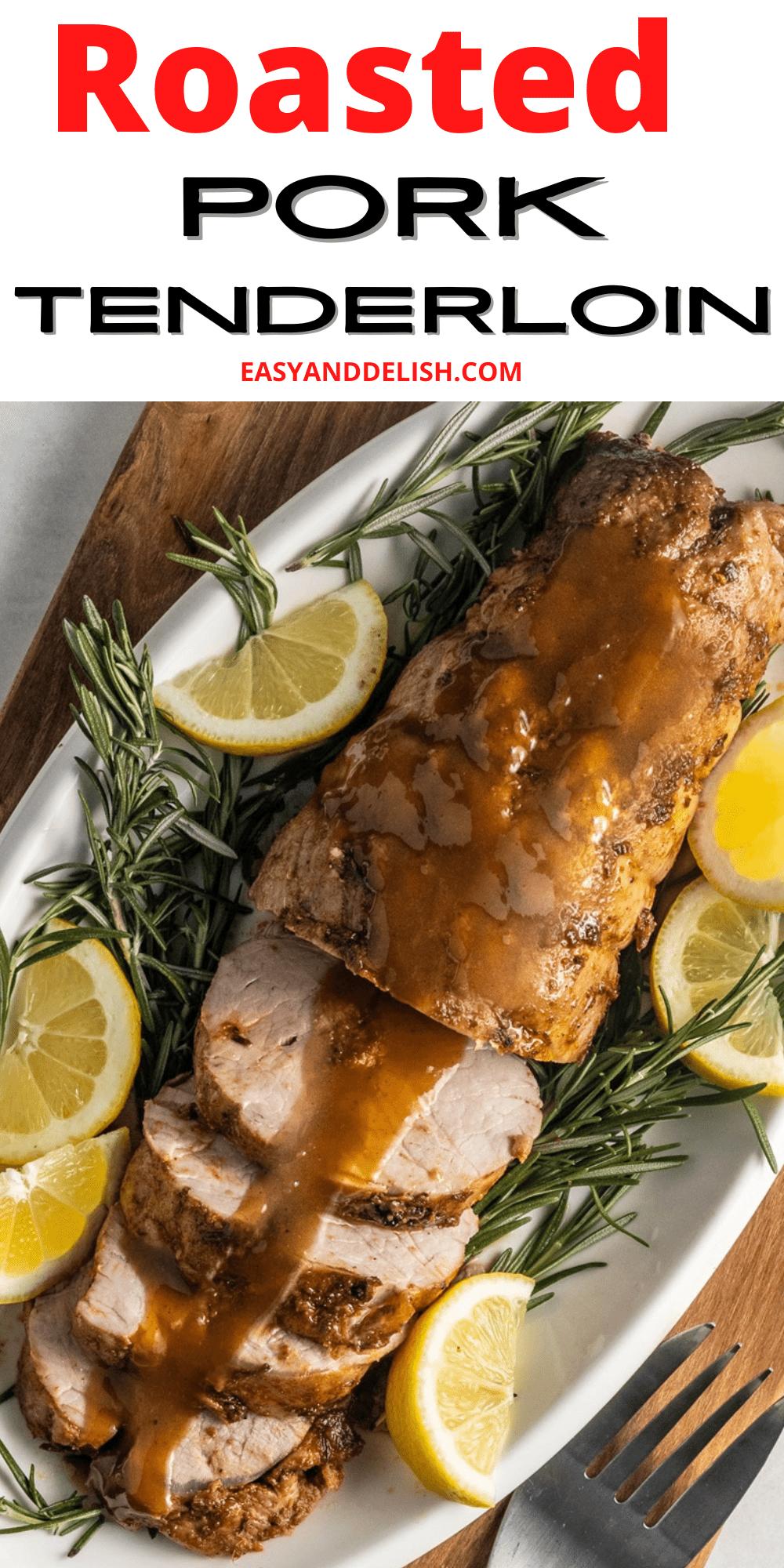
This post was first published on February 24, 2012.
For more amazing recipes and cooking tips, visit Ekilove.



